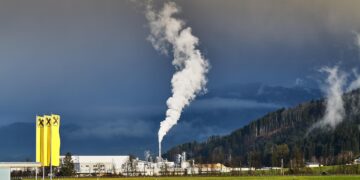Industrial Emissions Unveiled: The Hidden Dangers of Factory Air Pollution
Throughout the industrialized world, factories and manufacturing facilities are pivotal in supporting economies and providing jobs. However, the environmental impact of industrial emissions presents a grave challenge to public health and ecosystem integrity. This discussion explores the hidden dangers linked with factory air pollution, delves into common queries about the issue, and offers insights into potential mitigation strategies.
Understanding Industrial Emissions
Industrial emissions refer to pollutants released into the air during the manufacturing processes of various industries including but not limited to chemicals, steel, textiles, and automotive. These emissions include a wide range of pollutants such as sulfur dioxide (SO2), nitrogen oxides (NOx), particulate matter (PM), volatile organic compounds (VOCs), and heavy metals.
The hazardous nature of these pollutants poses considerable health risks and environmental challenges. For instance, nitrogen oxides are notorious for their role in forming ground-level ozone, a primary component in smog, which can impair lung function and exacerbate asthma.
Health Impacts Linked to Industrial Pollution
Industrial air pollution is a significant health hazard. Short-term exposure to air pollutants can lead to respiratory infections and aggravation of existing lung and heart conditions. Long-term exposure can be even more severe, potentially resulting in chronic respiratory diseases, lung cancer, and cardiovascular diseases.
Communities living in proximity to industrial areas are particularly vulnerable. Children, the elderly, and individuals with pre-existing health conditions face the highest risk, prompting widespread concern and demands for stringent regulatory measures.
Environmental Consequences of Factory Emissions
Beyond direct health repercussions, industrial emissions contribute to broader environmental issues such as acid rain, water pollution, and global warming. For example, sulfur dioxide and nitrogen oxides can mix with rainwater to form acid rain, which acidifies soils and water bodies, destroying ecosystems and harming wildlife.
Moreover, some industrial pollutants have the capability to travel long distances, affecting air quality and public health in regions far from the original source of the emissions. This transboundary nature of air pollution makes it a complex issue for policymakers.
Addressing the Challenge of Industrial Emissions
To mitigate the adverse effects of industrial emissions, substantial steps must be taken both at the policy level and within individual factories. Stringent environmental regulations, increased monitoring, and penalties for non-compliance are crucial in enforcing responsible emission practices.
Innovative technologies such as scrubbers and filters can reduce the amount of pollutants released into the atmosphere. Additionally, moving towards renewable energy sources and improving energy efficiency in industrial processes can drastically cut down emissions.
Role of Legislation in Curbing Pollution
Legislation plays a critical role in controlling factory emissions. Laws such as the Clean Air Act in the United States set forth national standards for air quality, ensuring that industries adhere to permissible levels of key pollutants. The enforcement of these laws is essential for their success, requiring regular monitoring and adjustments based on the latest scientific findings.
Internationally, agreements like the Paris Agreement oblige countries to reduce their carbon footprints, which indirectly encourages industries to innovate and reduce emissions. National and global policies must align to effectively tackle the challenge of air pollution.
Public Awareness and Community Activism
Public awareness is pivotal in the fight against industrial pollution. More informed citizens can make healthier choices, pressure industries to adopt cleaner practices, and influence public policy through voting and advocacy.
Community activism plays a significant role in addressing local industrial pollution. By forming or joining local environmental groups, individuals can bring attention to specific issues and demand action from local businesses and governments.
Conclusion: A Call to Action
The hidden dangers of industrial emissions are far-reaching, impacting both health and the environment across the globe. While industries are essential for economic development, it is imperative that they operate responsibly to safeguard public health and the planet. Through stringent laws, innovative technologies, public awareness, and community activism, it is possible to reduce the negative impacts of factory air pollution dramatically.
Addressing the challenge of industrial emissions is not just a policy issue but a community concern that requires cooperation and commitment across all sectors of society. The time to act is now—to ensure a healthier, greener future for coming generations.










